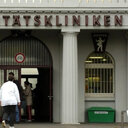Anti-inflammatory effects of South American Tanacetum vulgare.
Lykilorð
Útdráttur
In recent years the role of phenolic compounds and sesquiterpene lactones, particularly parthenolide, in the anti-migraine and anti-inflammatory effects of Tanacetum parthenium (Asteraceae) has attracted much attention. However, the closely-related cosmopolitan species T. vulgare has remained outside the mainstream of research in this field. After treating the aerial parts of T. vulgare with dichloromethane and methanol, and applying conventional column and thin-layer chromatographic techniques, it was possible to isolate from the moderately lipophilic fractions the principles responsible for the anti-inflammatory activity of this plant against the mouse-ear oedema induced by 12-O-tetradecanoylphorbol 13-acetate. These were identified by ultraviolet and nuclear magnetic resonance spectroscopy as parthenolide (93% oedema inhibition at 0.5 mg/ear, ID50 (dose of drug inhibiting the oedema by 50%) = 0.18 micromol/ear) and the methoxyflavones jaceosidin (80% oedema inhibition at 0.5 mg/ear, ID50 = 0.50 micromol/ear), eupatorin, chrysoeriol and diosmetin. Because in molar terms the potency of parthenolide was nearly three times greater than that of the most active of the flavones and because it is obtained from the plant in considerably larger amounts, the flavonoids must only be partially responsible, and to a minor extent, for the observed in-vivo anti-inflammatory local effect.



